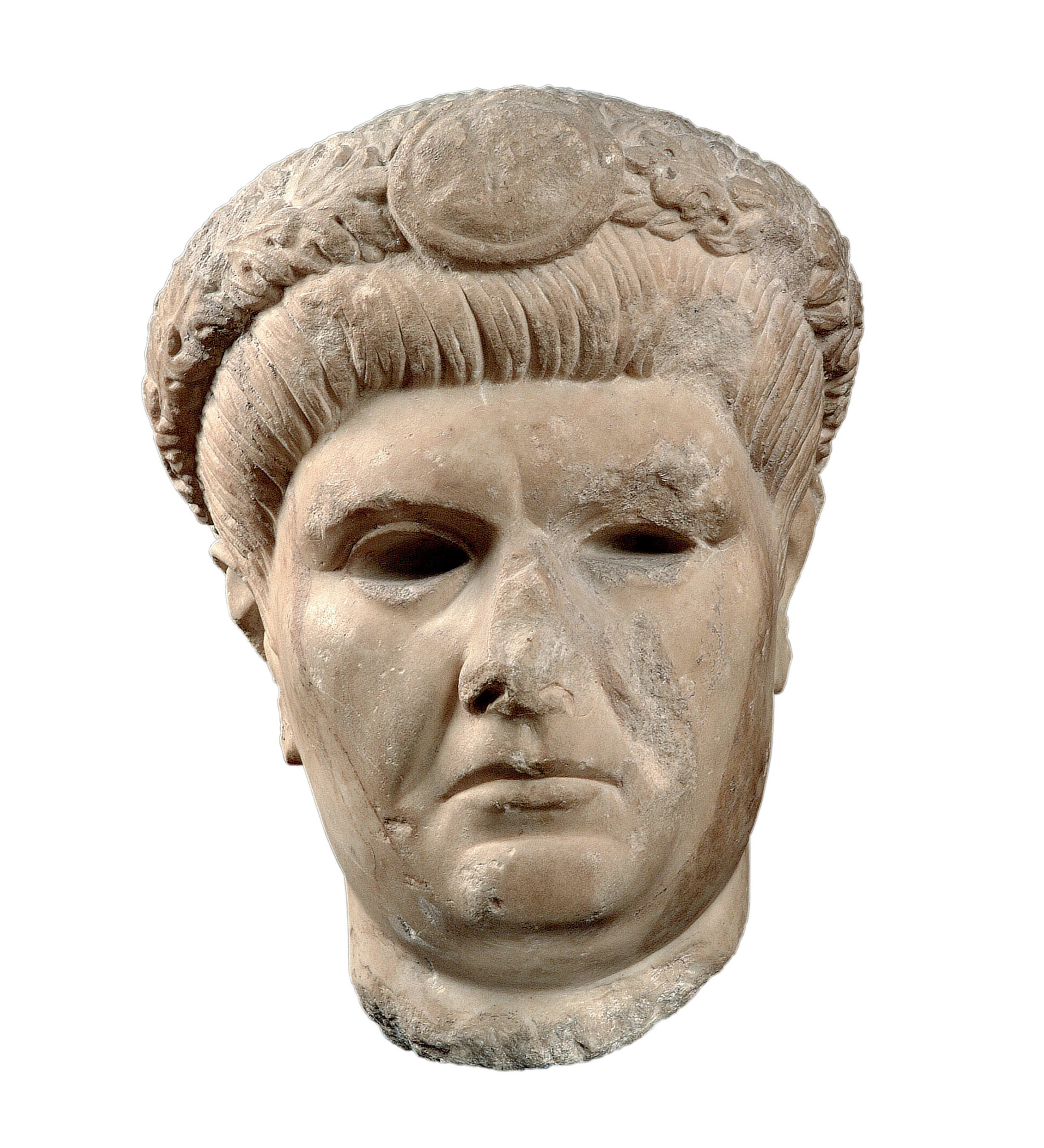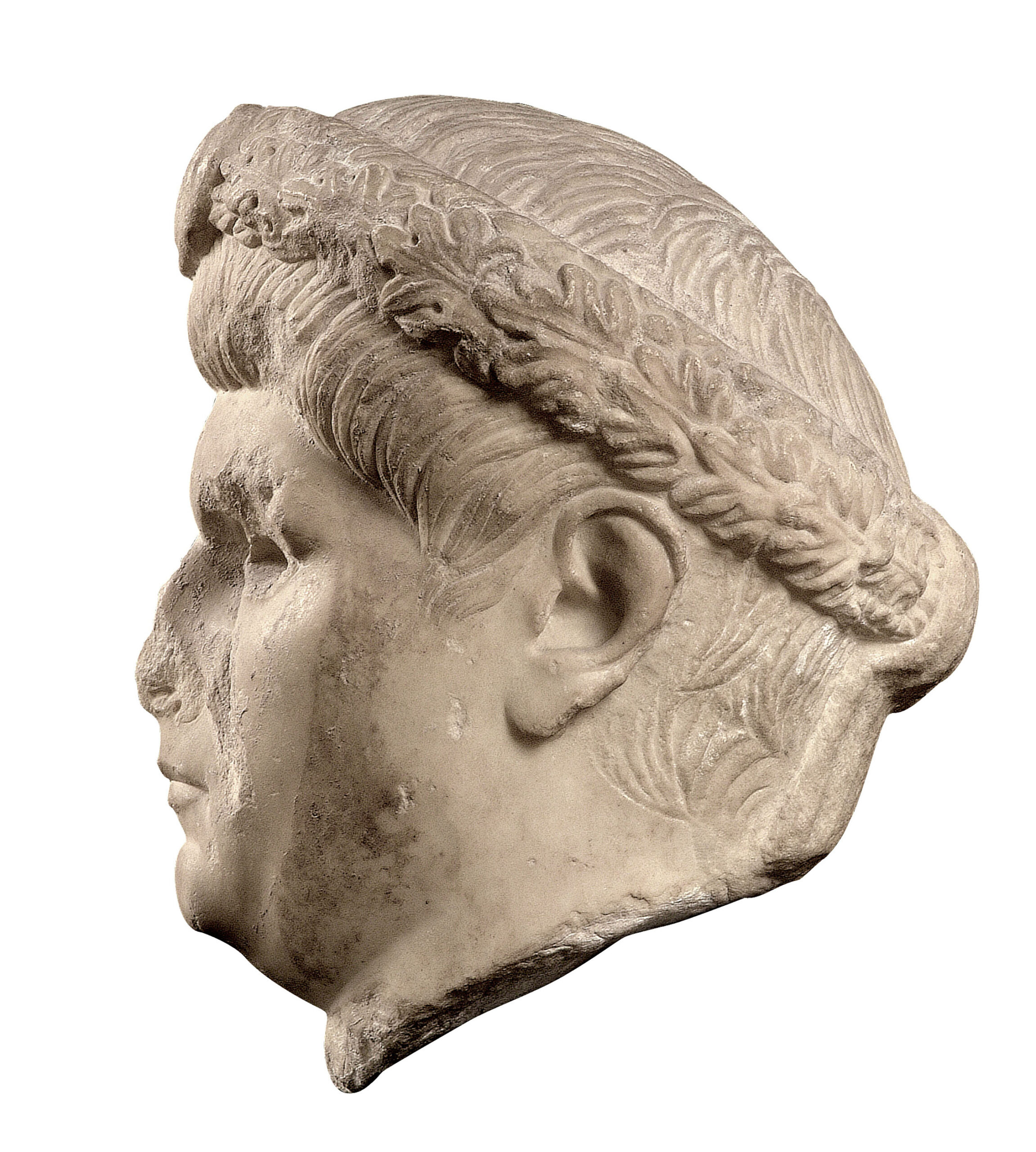





Τhis oversized head with the realistic rendering of an aged man’s face portrays a Roman Emperor. This is confirmed by the monumental size of the sculpture and the decoration of the hair with a wreath of oak leaves and a central shield-shaped medallion (corona civica). In Late Roman times this type of wreath was reserved for Emperors.
The identity of the individual, however, is hard to determine. The head does not resemble closely any of the known portraits of Roman Emperors. As a result, various interpretations have been proposed. Initially, it was suggested that the sculpture represents Galerius and that it was carved around 310 AD. Later, it was suggested that it portrays Theodosius I (late 4th c. AD). Recently, a new theory has been proposed, according to which it is a provincial portrait of Trajan, dated either in the 2nd or in the 4th c. AD.
The production of imperial portraits in Roman provinces was usually based on iconographic prototypes and models provided by workshops at Rome (which were then adjusted to local traditions and tastes). Portraits and coins were vital media for informing the subjects of the vast Empire about the physical appearance, the personality and the virtues of each Emperor. They were at the same time means of information and propaganda.
PUBLICATION
– Dontas G. 1975. ‘Collection Paul Canellopoulos (IX). Portrait de Galère’, Bulletin de correspondance hellénique 99, pp. 521-533.
– Choremi-Spetsieri Α. 2006. Cat. no. 111, in Choremi-Spetsieri Α. – Zarkadas Α. (eds), The Paul and Alexandra Canellopoulos Museum. Ancient Art, Athens, 186-187.
– Riccardi L.-A. 2000. ‘Uncanonical imperial portraits in the Eastern Roman provinces: the case of the Kanellopoulos Emperor’, Hesperia69, 105-132.